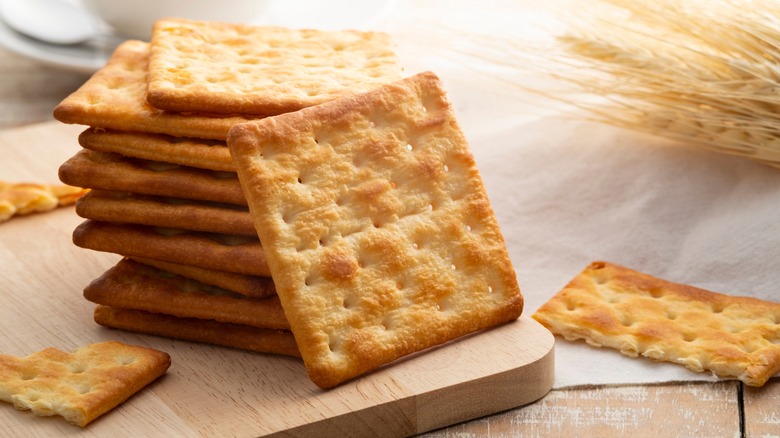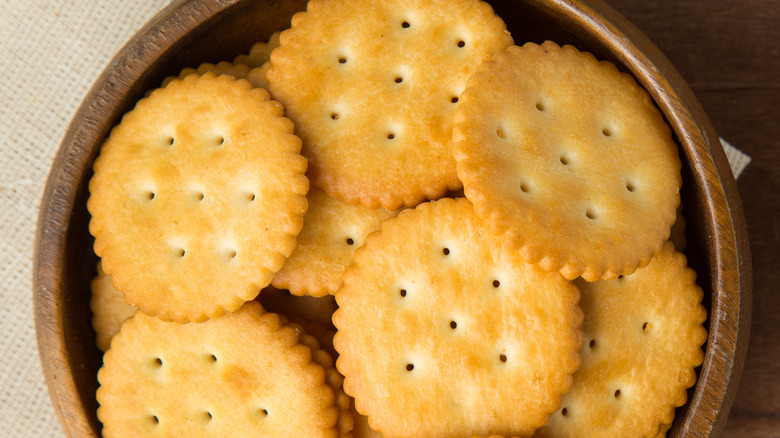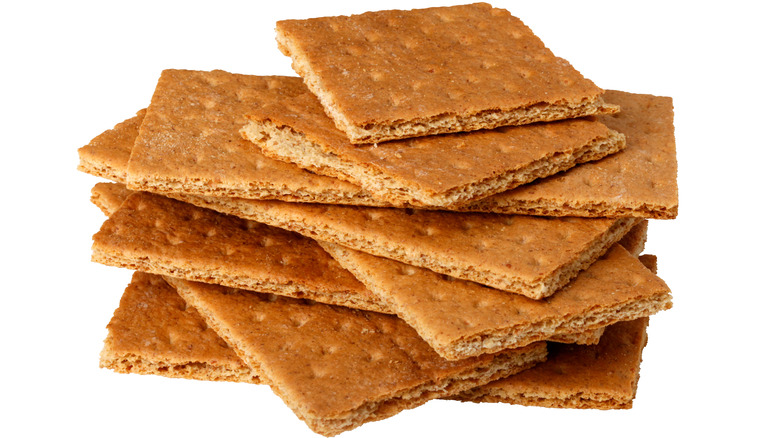The Reason Crackers Have Holes In Them Is All About Texture
Pick up a box of crackers, and you'll notice a trend: almost every cracker has holes in it. Those holes are often in an aesthetically pleasing pattern, but are they only there for appearance-based reasons?
Saltines, Ritz crackers, and even water crackers are full of holes. They're delicious as-is, but is there a reason the bakers behind our favorite crackers keep poking holes in them? Is there a solid argument for this "holes in crackers" phenomenon, or would that premise be full of holes, too? It turns out, there's a reason for the holes in all of those crackers, and it's a pretty good — albeit surprising — one.
No, bakers aren't trying to cheat you out of a few extra bites of your favorite crackers. It all has to do with an essential part of the cracker-manufacturing process. Although they look pretty, the holes serve a far more important purpose — they help the crackers bake properly.
Why do crackers have holes in them?
Cracker dough is typically made in such a way that the liquid ingredients weigh more than the others. Due to the amount of liquid in the dough, cracker dough has a tendency to steam as it bakes. There's just one problem: The steam needs to go somewhere instead of staying packed in the cracker. That's why so many crackers have holes poked into them prior to baking.
Unlike many other baked goods, crackers shouldn't rise, so that steam needs a "release valve" to keep the cracker flat. And those small holes are the perfect solution.
And the number of holes? That's not random. The number of holes poked — or "docked" — into each cracker depends on the cracker's size, with larger crackers needing more docking than smaller ones. It's all part of the process of making the best-tasting crackers possible. Who would have thought?
Which crackers have the most holes?
You may not have examined all of the crackers you buy closely enough to look at how many holes they have. But now, you may feel tempted to. While some snack crackers, such as Cheez-Its, have just one hole, others can have significantly more. But which type of cracker has the most holes?
There's no "typical" number of holes in a cracker because of how diverse crackers can be in size. Ritz crackers have a signature seven-hole pattern, but they're far from being the cracker with the most holes. Town House crackers are slightly ahead of Ritz in the "docking game," with 10 holes per cracker. Saltine crackers are even more complex — they traditionally have 13 holes, though some have been manufactured with 16 holes. Club crackers are near the top of the list, with 18 holes.
And graham crackers, if taken as a full sheet, are bigger than many of their cracker counterparts and can have high hole counts, too. Crackers have holes to prevent rising and stay crispy. The next time you eat a cracker, remember that without the holes, the crackers wouldn't have the texture you love.


